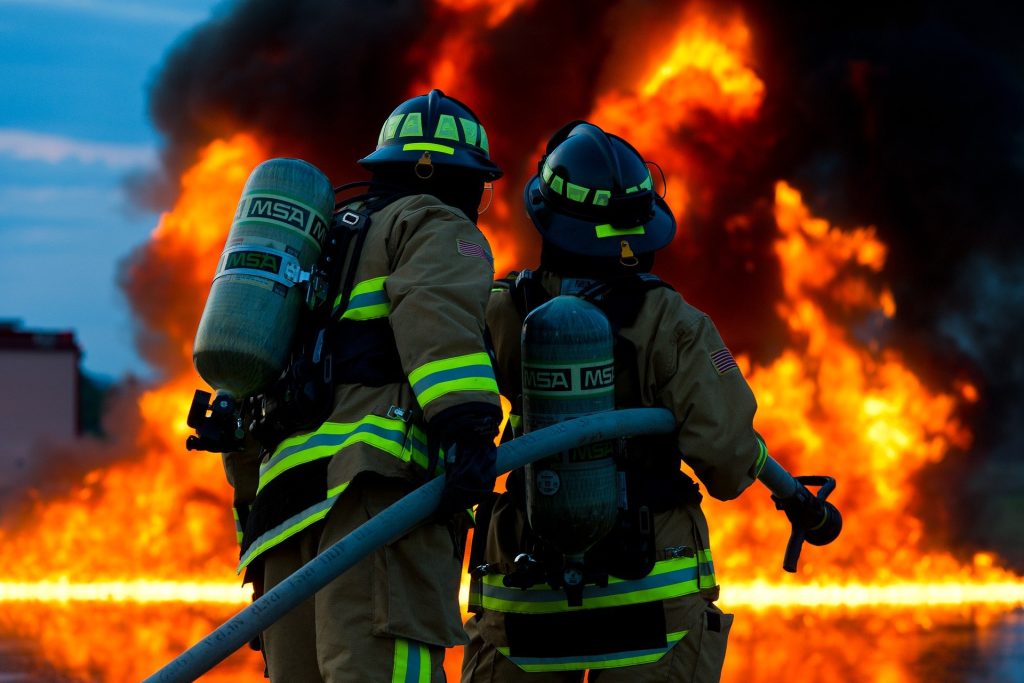
A new study has shown that volunteer firefighters have higher levels of ‘forever chemicals‘, per- and polyfluoroalkyl substances (PFAS), in their bodies than the general population.
Volunteer firefighters—who comprise more than 65 percent of the U.S. fire service—monitored their exposure to PFAS. PFAS are synthetic organic substances with diverse structures, properties, uses, bioaccumulation potentials and toxicities. These chemicals do not break down easily and accumulate in human bodies and in the environment and are found in common items food packaging, electronics and carpeting. PFAS have been associated with a number health conditions that affect firefighters, including cardiovascular disease, and increasingly to cancer.
“The primary cause of line-of duty death among firefighters are heart attacks. They also get and die from many types of cancer more often than other people,” said lead author Judith Graber, an associate professor at Rutgers School of Public Health and a faculty member at the Environmental and Occupational Health Sciences Institute. “More than 95 percent of the U.S. population have these chemicals to some degree in their bodies, but firefighters have heightened exposure to PFAS through their protective gear and fire suppression foam and the burning materials they encounter that release particles, which can be inhaled or settle on gear and skin.”
The study surveyed 135 members of a volunteer fire department in New Jersey on their lifestyle and cancer risk factors. It compared traces of nine PFAS chemicals in their blood against the levels recorded in a 5000-strong nationally representative sample used by the CDC as a reference for the general population. Although over 4000 PFAS chemicals exist, the study looked at the nine chemicals commonly seen in the general population that the CDC has also tracked for the greatest length of time.
Two of thosee chemicals—perfluorododecanoic acid (PFDoA) and perfluorodecanoic acid (PFDA)—were found to be higher in volunteer firefighters. “Notably, we found PFDoA levels in 80 percent of the firefighters, but little in the general public,” Prof Graber said.
The number of years of firefighting was linked to higher levels of the chemicals; the average participant had 20 years of experience. Since they are constantly on call, volunteer firefighters may potentially have more years of firefighting-related exposures than their career counterparts, Graber said.
“The number one risk of a firefighter is being protected from the fire. The chemicals used in fire suppression foam and the protective clothing firefighters use came out 40 years ago when people thought they were safe, and they work well for what they are intended to do,” Prof Graber explained. “Further research is needed to better understand the sources of these chemicals and to design effective foam and protective clothing that do not use these chemicals.”
Source: Medical Xpress
Journal information: Judith M. Graber et al, Prevalence and Predictors of Per- and Polyfluoroalkyl Substances (PFAS) Serum Levels among Members of a Suburban US Volunteer Fire Department, International Journal of Environmental Research and Public Health (2021). DOI: 10.3390/ijerph18073730

